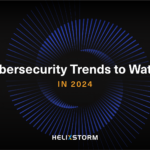
Does your team have a practical approach to workstation management? Today we will review nine desktop management best practices to enhance productivity, control costs and improve efficiencies in your business.
1. Take Inventory
It can be tempting to upgrade your workstation management with the latest and greatest technology as it becomes available. However, while considering these investments, take the time to inventory your existing equipment. By getting an accurate overview of the devices your organization already has, you can reallocate any unused devices and save money on new purchases.
Keeping track of retired devices also reduces your risk for theft and data exposure. For example, flash drives and portable hard drives can contain sensitive information, like customer data or intellectual property. If you don’t have a log of all these devices, you won’t know they are missing until it’s too late. Sometimes these unaccounted devices might even be used for illegal activities.
2. Onboard New Users
Although implementing desktop management best practices can make a huge difference in your overall productivity, these changes are only effective if they are communicated promptly. By ensuring all users understand your organization’s workstation management policies and procedures, they can stay up to date and ready to handle whatever comes their way.
Start by building a checklist of the necessary steps for onboarding a new workstation. This should include all IT processes, including required software and maintenance schedules. Using a standardized list will ensure consistent workstation management across your organization, resulting in more efficient troubleshooting should a problem arise.
3. Keep Employees in the Loop
Communicating new systems or updates is critical for proper usage. By sharing the latest solutions for workstation management with your employees, you can ensure that your desktop management best practices are actually put to use.
For example, successful workstation management relies on regular software or system updates to ensure the best version is in use while safeguarding your systems from possible vulnerabilities. By promptly informing your employees of these updates, you can help them prepare ahead of time so they don’t lose important data or disrupt their workflow.
4. Monitor Your Helpdesk Tickets
Make your user help protocol easy to find by placing the helpdesk in a visible spot on all workstations. Not only will this simplify the helpdesk process for your employees, but it will also encourage users to submit queries, giving you insight into any trends so you can improve the structure of your workstation management.
Your IT team should also stay on top of any helpdesk queries and resolve them quickly. Many organizations have outsourced their IT service desk to a third-party service provider to ensure an efficient helpdesk workflow, resulting in significant benefits like round-the-clock support and cost savings.
5. Segment Your Software by Department
Not everyone in your organization uses the same software. However, application sprawl, or the overuse of software in a system without proper planning, can result in duplicate work and redundant software use across multiple departments.
To avoid application sprawl, your IT team should document approved software for each team to determine which applications are necessary. By segmenting this documentation by department, you can ensure that each team has access to the tools they need while conserving resources and avoiding inefficiencies.
6. Encourage Knowledge Sharing
Once you have developed the ideal workstation management protocols for your organization, the work doesn’t stop there.
By encouraging your employees to discuss these ideas with their peers and managers, you can discover interesting insights that come from the actual use of your workstation management processes. These suggestions could actually lead to improvements across your enterprise, instilling confidence in your employees and showing them just how much their ideas are valued.
7. Automate
The latest workplace efficiencies are typically the result of automation. With automated processes and software, your team can benefit from seamless functionality. For example, applications with 24/7 tech support can quickly identify and resolve problems as they arise. Automated software can run its own diagnostics and repair any issues before they interrupt your operations.
8. Use Remote Management
If your business has many users, in-person workstation management can be challenging. Rather than having IT personnel resolve queries by going from desktop to desktop, consider implementing a remote desktop management software, which enables you to control all connected desktops from a single platform.
A managed services provider (MSP) can also monitor your workstations, allowing your team to focus on other areas of your business. By monitoring your network and overseeing maintenance protocols, an MSP can identify and resolve system vulnerabilities before they become problems.
9. Test, Test Test
Before implementing any new desktop management best practices, make sure that you have tested these protocols where they will be used. Although a specific approach to workstation management might work for one organization, it might not work for you. For example, using Windows or Mac OS can lead to differences in how new software performs. By testing these strategies in your workflow, you can avoid the possibility of ineffective or incompatible software.
Partner With Helixstorm for Effective Desktop Management
Workstation management is a crucial part of any successful IT infrastructure. To find the desktop management best practices that work for their needs, many businesses have outsourced their desktop management to third-party experts like Helixstorm.
At Helixstorm, we provide a sophisticated level of support, proactive maintenance and security to reduce the cost of in-house IT services for many companies. Our dedicated team of experts will design a customized managed IT support plan for your business that includes solutions like workstation security, vulnerability scans and more.
To learn more about how Helixstorm can transform your workstation management, contact us today.


